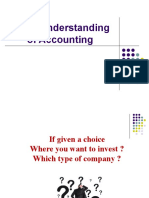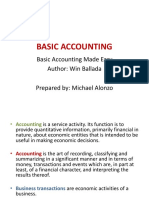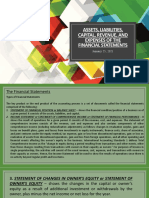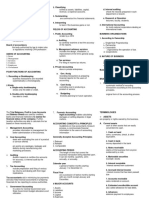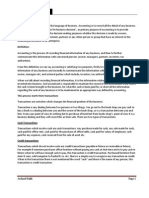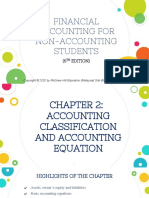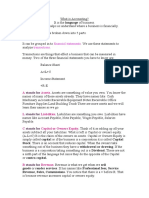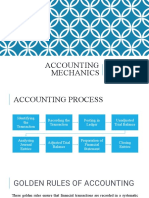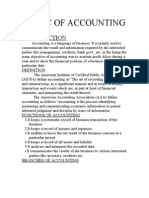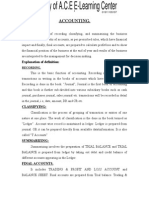0% found this document useful (0 votes)
37 views6 pagesChapter 1 Notes
The document provides an overview of accounting, emphasizing its role in recording, analyzing, and reporting financial transactions. It outlines key sections of accounting, including book-keeping and financial statement preparation, and explains the concepts of assets, liabilities, and capital, along with the fundamental accounting equation. Additionally, it discusses the importance of financial statements for business decision-making and provides examples of various transactions and their effects on financial records.
Uploaded by
waqas ghouriCopyright
© © All Rights Reserved
We take content rights seriously. If you suspect this is your content, claim it here.
Available Formats
Download as PDF, TXT or read online on Scribd
0% found this document useful (0 votes)
37 views6 pagesChapter 1 Notes
The document provides an overview of accounting, emphasizing its role in recording, analyzing, and reporting financial transactions. It outlines key sections of accounting, including book-keeping and financial statement preparation, and explains the concepts of assets, liabilities, and capital, along with the fundamental accounting equation. Additionally, it discusses the importance of financial statements for business decision-making and provides examples of various transactions and their effects on financial records.
Uploaded by
waqas ghouriCopyright
© © All Rights Reserved
We take content rights seriously. If you suspect this is your content, claim it here.
Available Formats
Download as PDF, TXT or read online on Scribd
/ 6

















